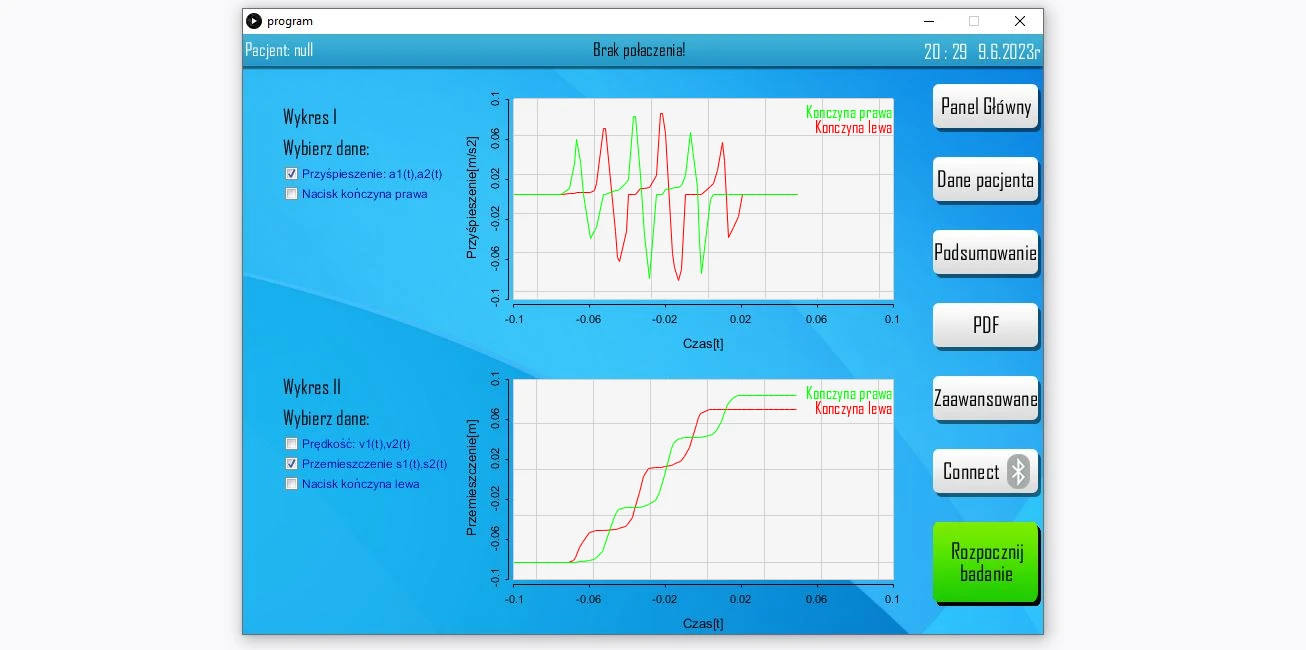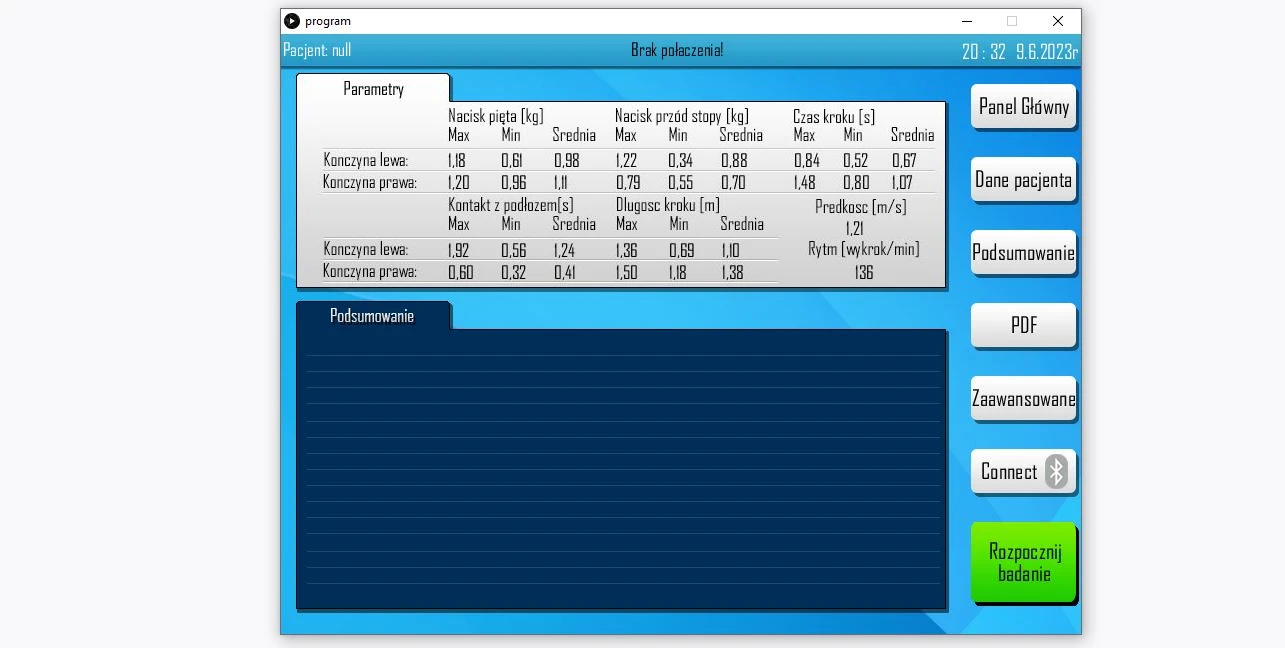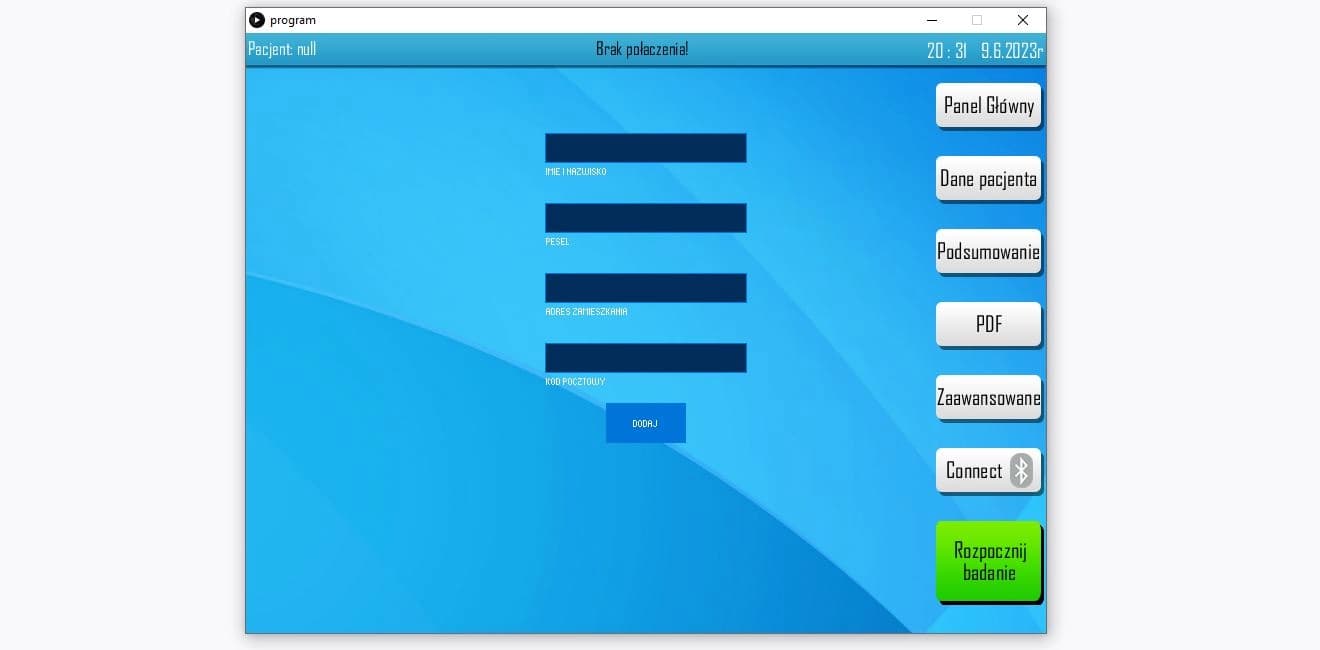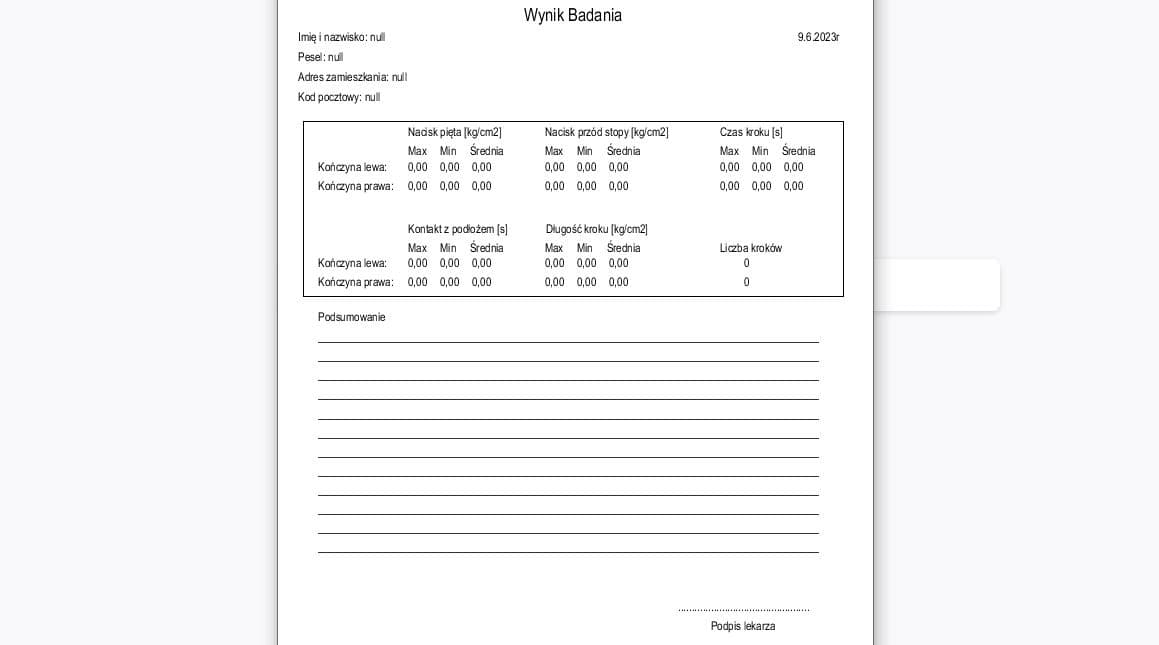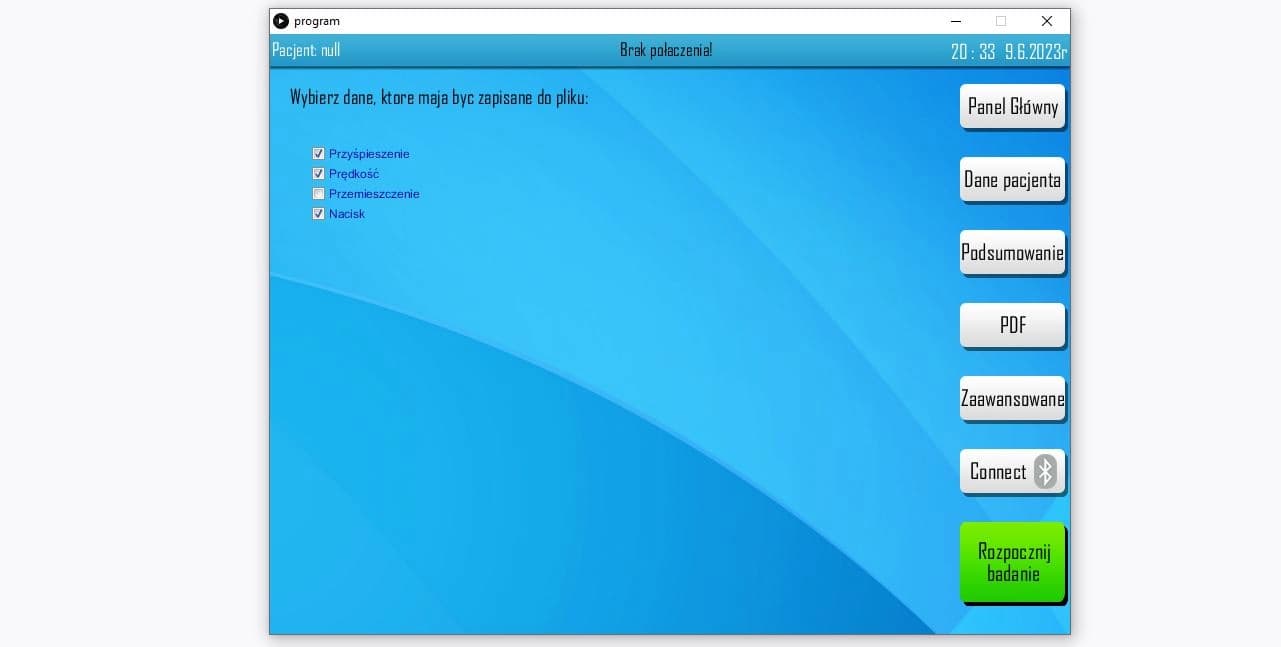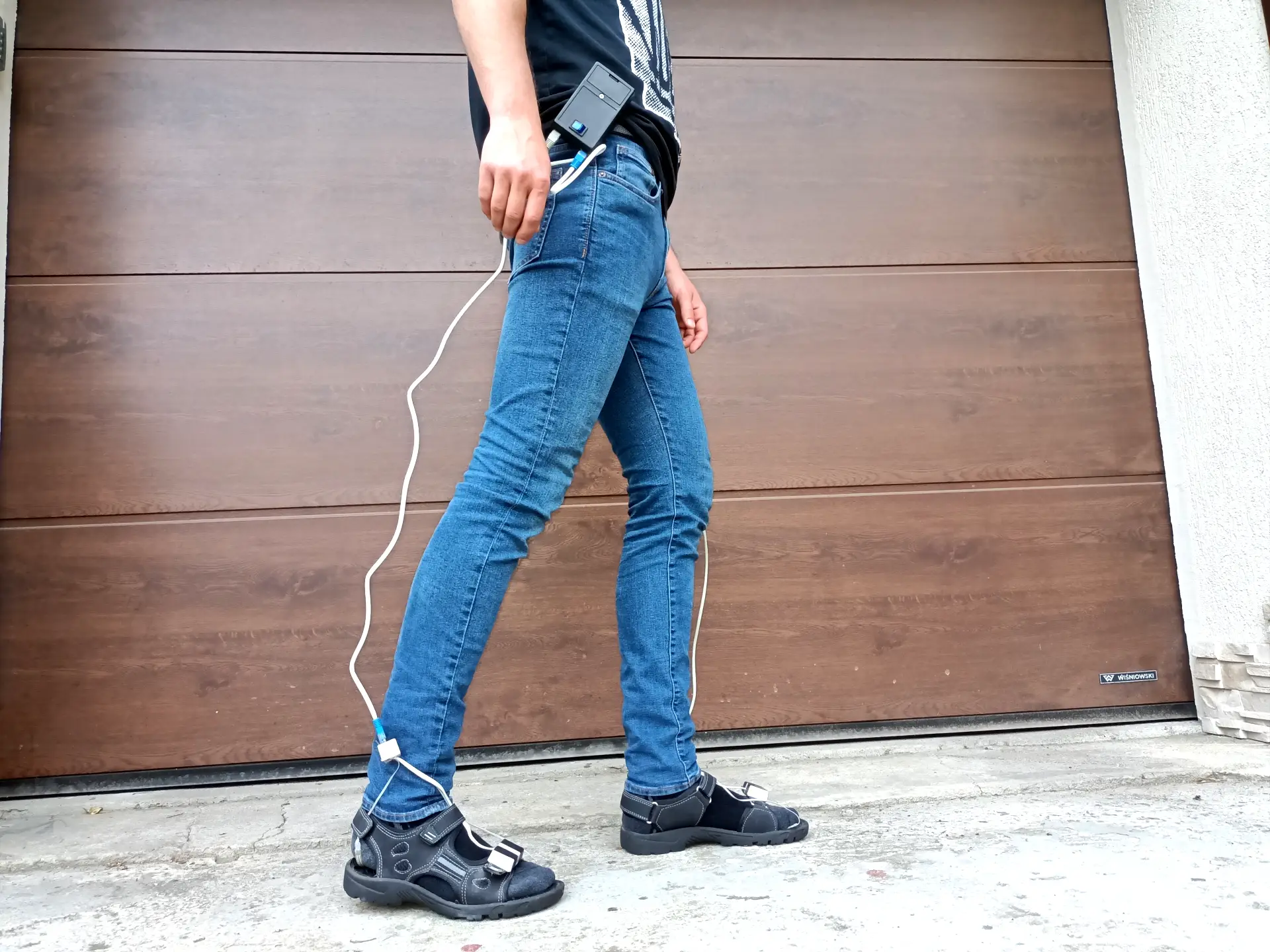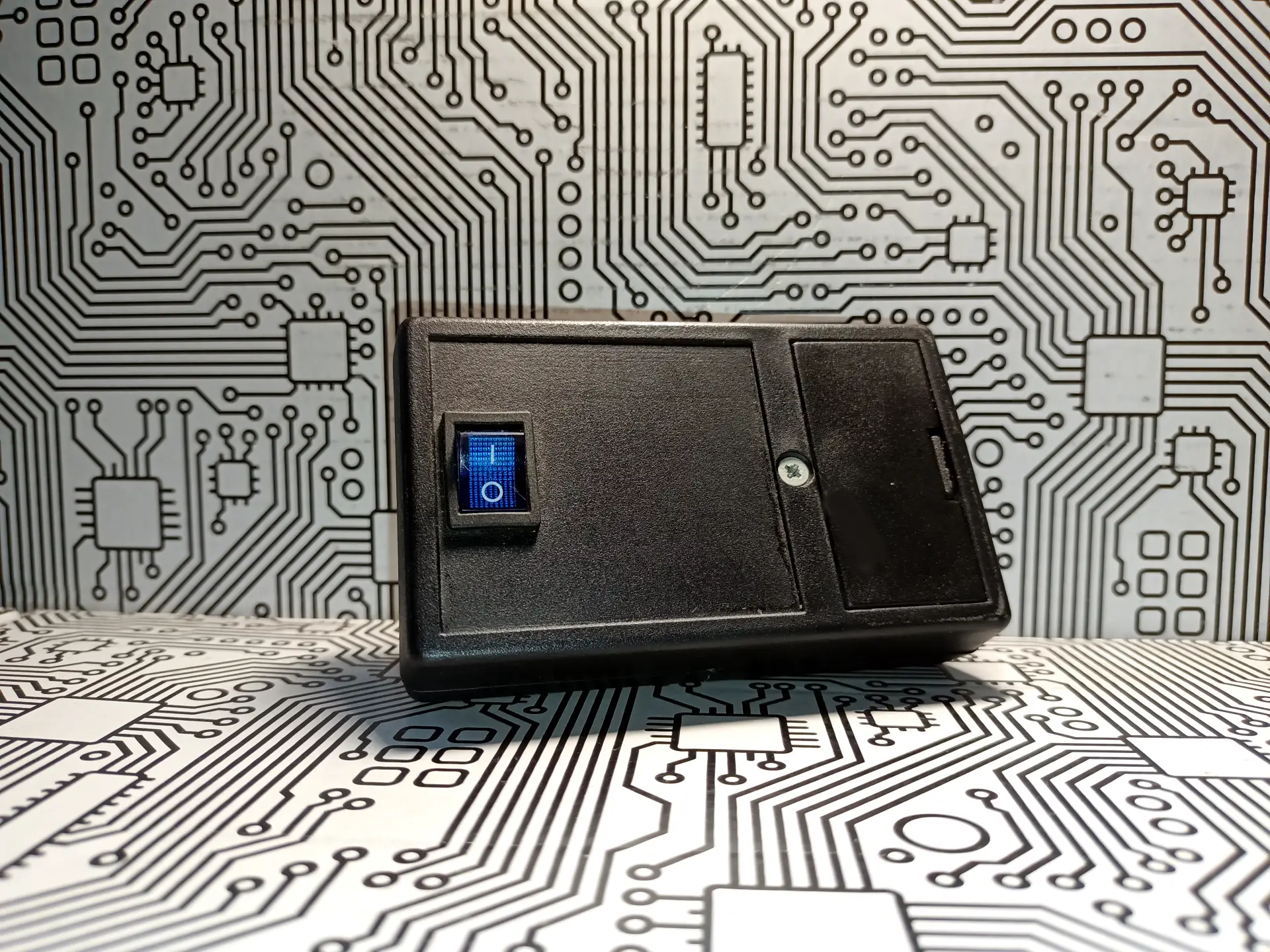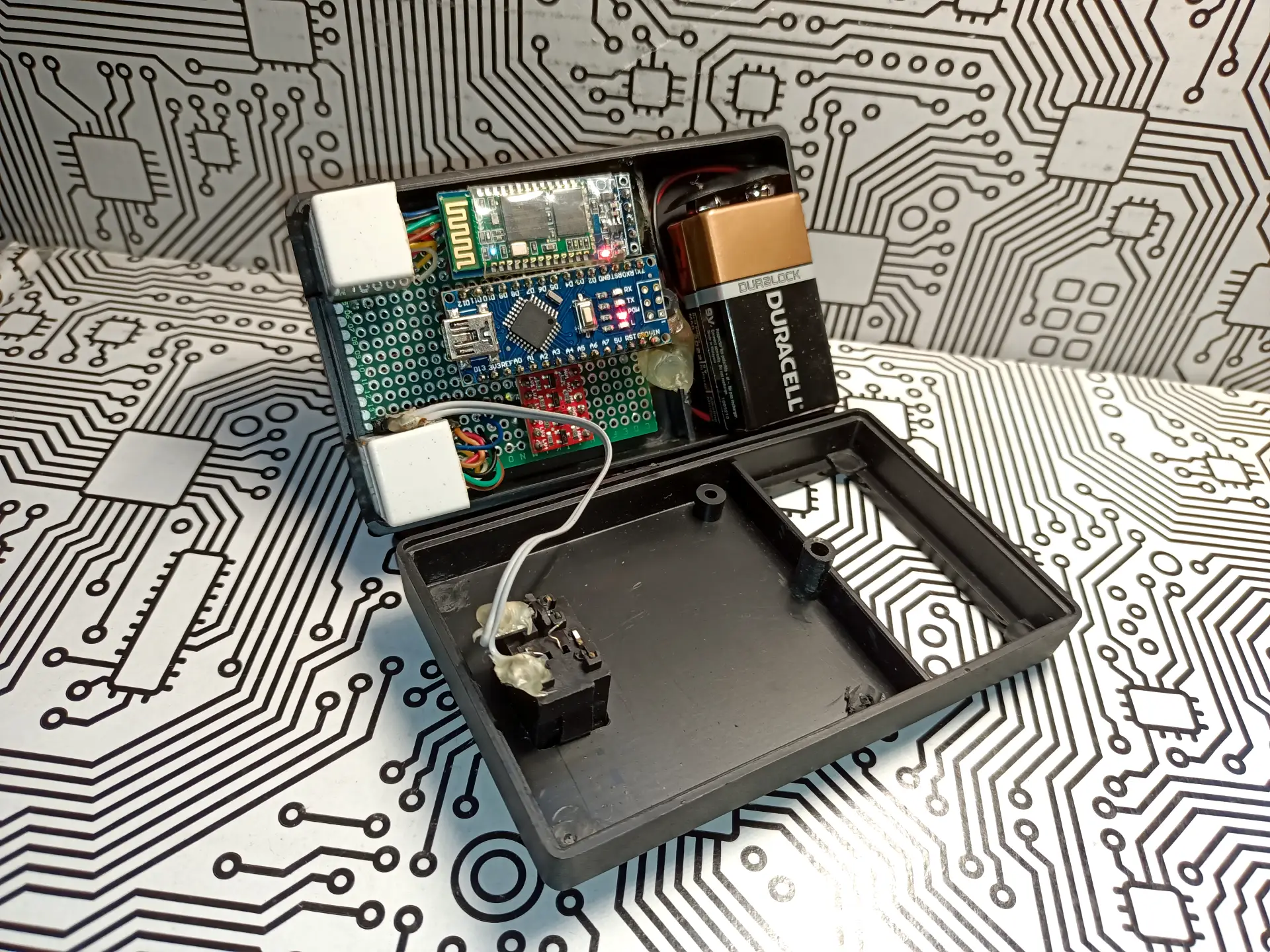Gait monitor
Design and implementation of a system for monitoring human gait parameters.
Student - AGH University of Krakow
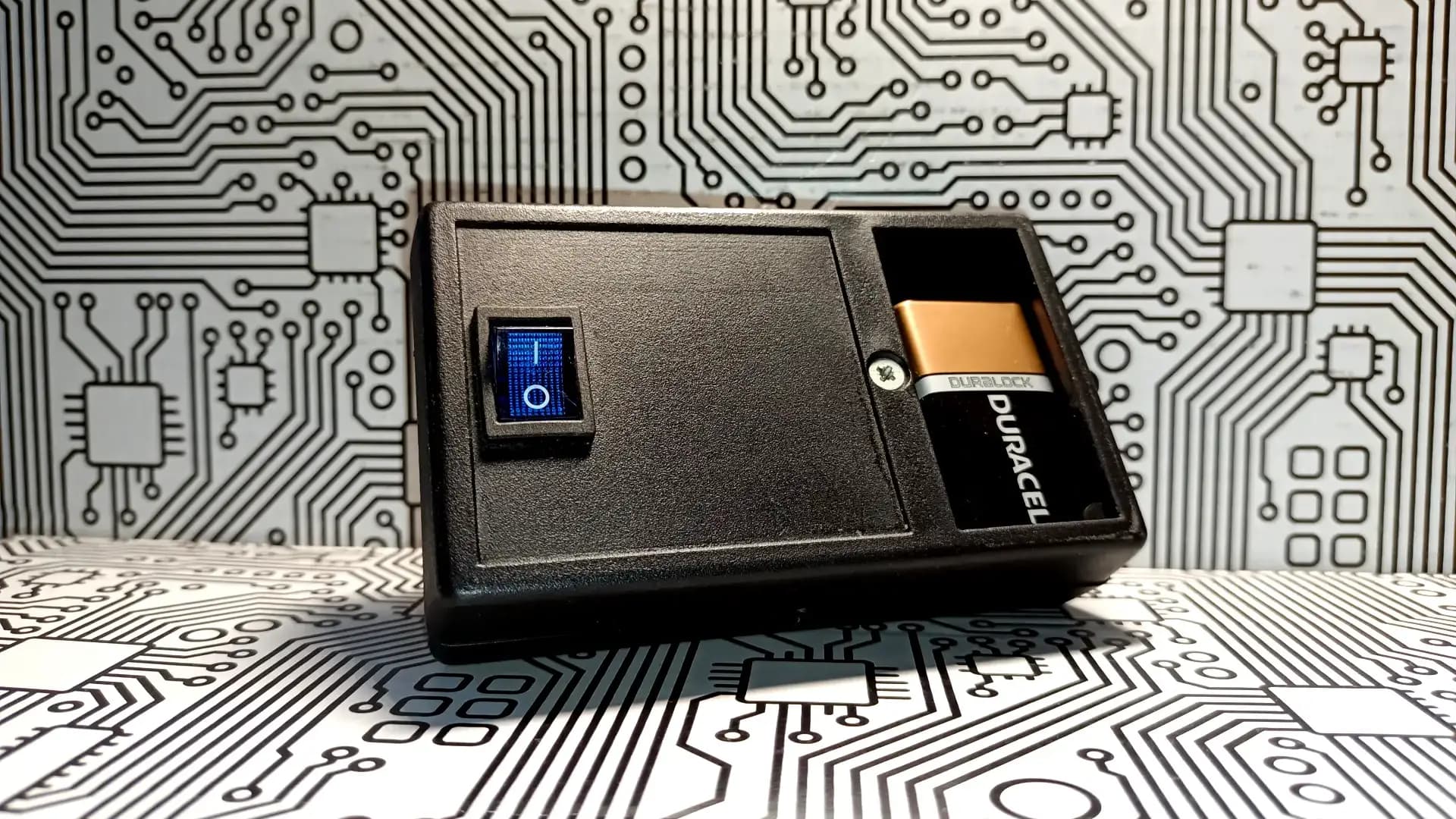
Description
The subject of the work was the design and implementation of a system for monitoring human gait parameters. The idea behind the device was to combine the advantages of research conducted using inertial acceleration sensors and resistive pressure sensors. Parameters that can be measured thanks to the sensors used include: foot pressure distribution, stride length and rhythm, and speed and trajectory. The created system was supposed to be easy to use and convenient to use, so it was decided to transmit data wirelessly from the measuring system to a computer with a preloaded interface application. The measurement system was based on the Arduino Nano platform, the HC-06 Bluetooth module, the GY-521 three-axis accelerometer and gyroscope module, as well as the SEN-09375 resistance sensors. The interface application was created based on the Processing development environment. The made human gait monitor works and generates highly repeatable and accurate results.
Background
The project was made as part of my master's thesis during my studies in Mechatronic Design at the AGH University of Science and Technology in Krakow.
Process
Review of available market solutions, including methods used at that time to study patients' gait parameters. Consultations with the engineering community, including my promoter and the president of the company where I was doing my internship. Based on the above, three main ideas emerged:
- Resistance mat - the idea of my promoter, which I politely rejected, arguing, among others, high project costs, limited by the length of the mat, measurement of parameters and poor mobility of the system
- Vision system - the idea of the president of the company where I did my internship. I also rejected this solution, arguing the same as above
- Inertial-resistive measuring system - my idea, was free from the above disadvantages, carrying additional benefits, but also risks.
2. Project
Commencement of design works, including:
- Ideational project
- Selection of components and electronic components
- Selection of technologies: Arduino (C++ ), Processing (Java), Bluetooth wireless communication
- Electronic schematics
- Create a BOM list
- Purchasing components according to the BOM list
- Execution of a physical measuring system according to the scheme and design
- Software for the measuring system - Arduino (C )
- Creating an interface application - Processing (Java)
- Integration of the entire system using Bluetooth communication
- Layout
- Tests of the system's operation on myself and on volunteers
- Description of research results
- Preparation of the final documentation of the device along with the user's manual
- Presentation of the completed project during the defense of the master's degree at the AGH University of Science and Technology in Krakow
Features
- Mobile measuring system
- Measurement of gait parameters without spatial limitations, possible in all conditions
- Ergonomics
- Dedicated desktop application created to support and record research
- Highly repeatable and accurate measurements
- Acceleration, velocity and displacement at the tested points of the limbs
- Gait speed and cadence
- Step length
- The duration of the stride and the contact time of the limbs with the ground
- Pressure exerted by specific parts of the feet
- Graphical and numerical representation of measurement data
- Selection of data displayed in charts
- Graphs created in real time allowing for quick detection of the correctness of the conducted test
- The range of maximum values in the graphs automatically adjusts to the amplitude of the signals
- Enter patient details
- Study summary consisting of a table of collected data in a clear and easy to evaluate way
- Field for description of the examination by the doctor / person carrying out the measurements
- Export of the test result together with the medical description to a print-ready PDF file (The file contains: the date of the test, patient data, a set of results in numerical form and a description prepared by the doctor)
- Export of measurement data to a .txt file for archiving or further analysis.
Conclusion
The made human gait monitor works and generates highly repeatable and accurate results. The system can be successfully used in rehabilitation to study the progress of treatment of musculoskeletal disorders, and can also be helpful in detecting gait abnormalities and making an initial diagnosis.
